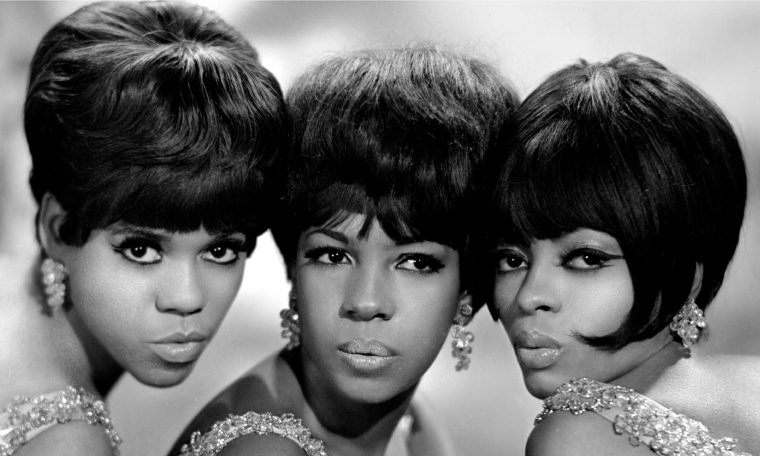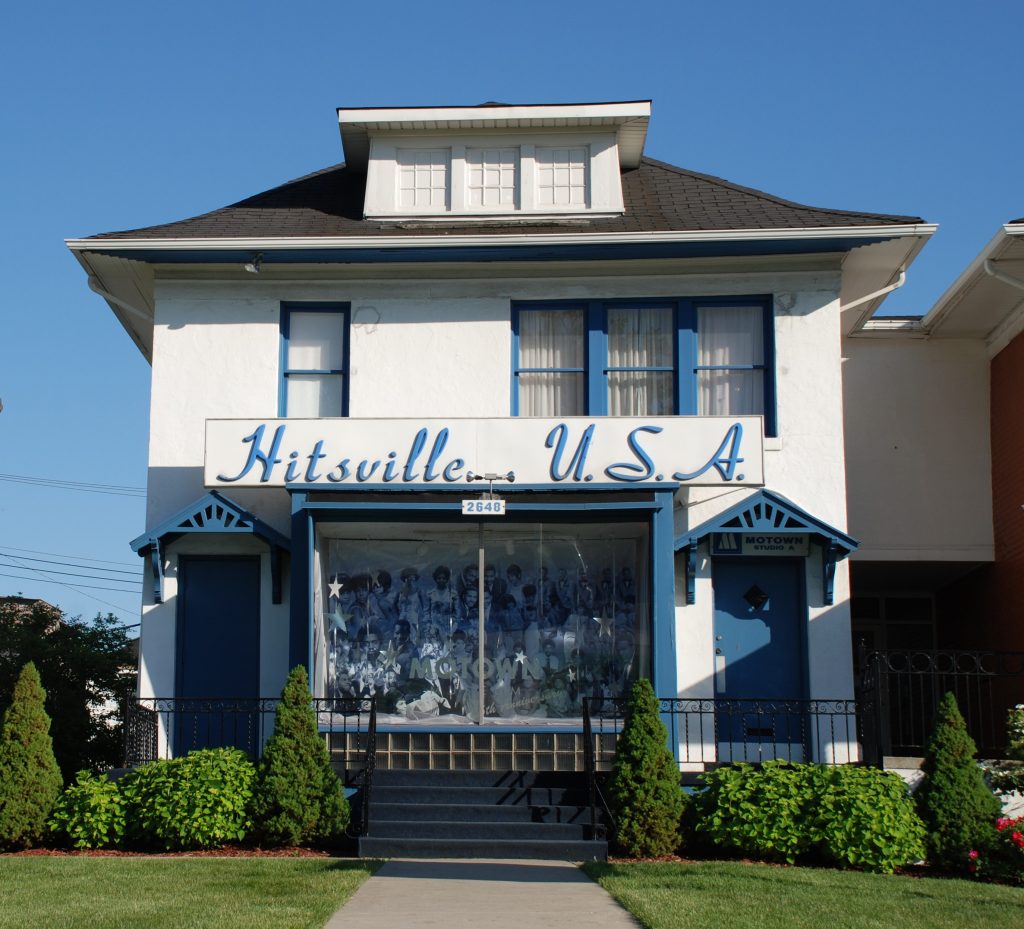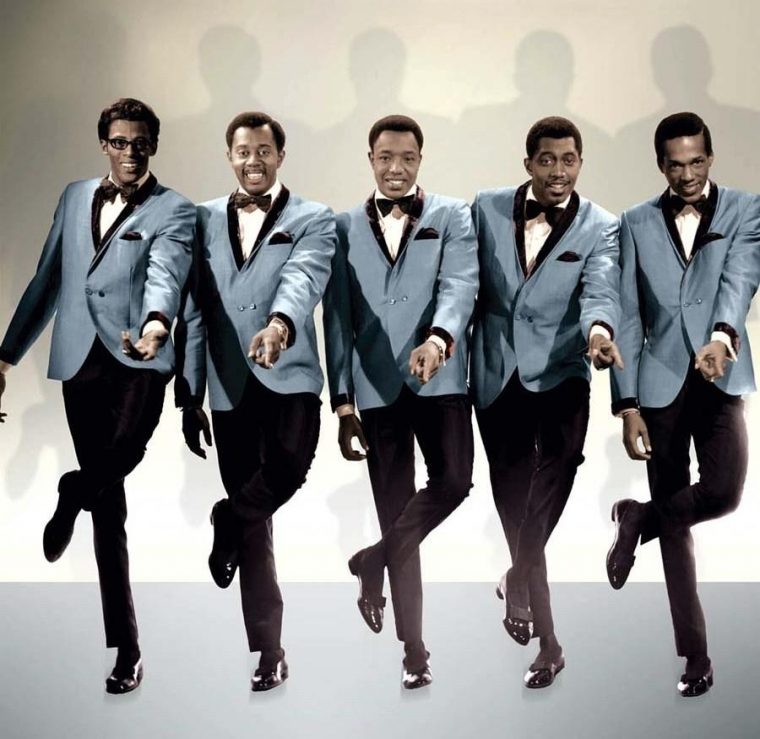Motown hits 50: Can’t forget the Motor City | Editor’s note: The following article was originally published in The Ann Arbor News following the sale of Motown Records to MCA Inc. in 1988. The article was subsequently cited in the bibliography of Gerald Posner’s 2003 book “Motown: Music, Money, Sex, and Power.”

During the heady days of the civil rights movement, many viewed Motown as a triumph of Black achievement. This degree of success was unprecedented for a minority-owned enterprise in America. As Motown marks its fiftieth anniversary in 2009, the legendary Detroit label continues to inspire dreams and imaginations.
Much of the lure of Motown stemmed from the meteoric rise of its stars and the company’s phenomenal growth, despite conditions that said success of this magnitude was impossible. As Sam Cooke discovered when he formed his own publishing company, the industry was simply a microcosm of the nation’s racism, with discrimination and outright thievery preventing many black artists from attaining even a fraction of their fair share.
Motown challenged these seemingly insurmountable odds. Esther Gordy Edwards, sister to founder Berry Gordy Jr., attributed the company’s success to the family’s drive which was also a core philosophy: “to make a better product.”
“One time Berry called Smokey at three in the morning and told him to come in and recut ‘Shop Around,’ ” she recalled. Gordy thought the tempo was too slow and in the early, rudimentary days of Studio A, everyone in the group was needed to recut the single. The revised track reached number one in Cashbox’s listings.
“Berry was making a commercial product, and young people was the market he was trying to reach,” Edwards noted. “He knew what young people wanted to hear. If small stations played one of our songs, then you could turn your dial to that station. The airwaves were free.”
Edwards was vice president of management and international relations for the company in the 1960s. She negotiated engagement contracts, determined where acts appeared, and decided who accompanied them. Edwards once convinced Dick Clark to accept a struggling, but determined, vocal group for an upcoming package tour. The “no-hit Supremes” broke during the tour when “Where Do Our Love Go” climbed to number one. Led by the theatrical and style conscious Diana Ross, the group embodied the aspirations of the company: total pop music crossover and unending upward mobility.
Detroit was brimming with extraordinary musicians in the 1950s and 60s and Gordy was able to attract some of the city’s best talent. William “Mickey” Stevenson, Motown’s A&R chief, aided the effort by combing Motor City nightclubs in pursuit of musicians. One session musician even came from the Gordy family’s church, Bethel AME in Detroit.
“Mrs. [Bertha] Gordy and my mother were friends and attended the same church,” recalled Motown session musician Carol Coleman-Cunningham. “Mrs. Gordy told my mother: ‘Your daughter is a musician; why doesn’t she try out at the company?’ ” Coleman-Cunningham, who was studying music at the University of Michigan and teaching school, auditioned and joined the company as part of the classical string section. From early 1963 through late 1966, her harp stylings helped “sweeten” the hits being recorded in Studio A. Known intra-company as “Schoolteacher,” Coleman-Cunningham can be heard on the Supremes’ “I Hear a Symphony” studio album, and on recordings by Marvin Gaye and Tammi Terrell and most of the major Motown acts of the period.
Although the music pouring out of Hitsville was exciting and original, songs also relied on a few formulas. Lyrics were typically written in the present tense to intensify a song’s emotional impact. Loop melodies pulled in a listener regardless of when they tuned in on the radio. Songs were kept under three minutes to ensure greater airplay. Like gospel, the lyrics told a story from beginning to end. And conflicts, as a competitor at Stax records astutely observed, were rarely resolved when the song ended.
Motown’s success had others making pilgrimages to Detroit thinking they could duplicate the feeling and sound simply by being in the Motor City. Others tried to crack the label’s Rosetta Stone by concentrating on individual elements. Sometimes there was so much buried in the musical mix that even repeated listenings left competitors and fans perplexed. In the 1960s, John Lennon was reportedly heard shouting over the party din to a Motown artist: “How do you get that backbeat on the drums? By using a tree or what?” Amhet Ertegun, founder of Atlantic Records, once said that Motown was one sound he couldn’t duplicate, although he tried with artist Barbara Lewis. The Motown Sound was difficult to distill because it was borne from wide ranging musical genres and traditions, some of which predated rock ’n’ roll. And sometimes the musical influences were obscure. Session musician James Jamerson once said he came up with a bass line based on the way a woman walked. In one studio session in the 1960s, Gordy asked Coleman-Cunningham to play her harp like a sitar.
Berry Gordy Jr. rolled out the hits with a precision much like the Big Three automakers. Quality control, an auto industry concept learned by Gordy during his brief tenure as a chrome trimmer at Ford, meant that Friday mornings were reserved for staff meetings to discuss which singles would be released. Other times, the company president would treat neighborhood kids to snacks and Cokes in exchange for their opinions on records. And Gordy, a successful songwriter himself, had an uncanny ability for sensing top 10 material.
“Berry is a creative genius, a God-given talent. He could write songs on the spur of the moment,” said Edwards. Pausing briefly, she glanced out the window onto West Grand Boulevard and uttered the word “traffic.” “He could write a song about traffic, put it into the context of a boy-girl relationship and make it a hit song.”
As the homegrown label became more successful, Gordy heightened the level of his aspirations. Like scores of others, he had established an independent-record label, but the vision was grander, the goals more complex, the game plan more long-term. Unlike his rivals, Gordy looked beyond the temporary gain of a top ten smash and sought to create long-term careers for his artists.
“Each plateau was to get to the next plateau,” Edwards recalled. Part of this evolution included the creation of Motown’s fabled Artist Development department. Gordy took unpolished, yet talented, performers and groomed them to play any venue in the world. Almost from the onset, Gordy had looked beyond the grueling Motortown Revues and toward the more lucrative supper club and Las Vegas engagements. Such venues not only meant higher earnings for the company, but also helped to establish an artist’s across-the-board credibility and longevity. Before Motown, most African Americans were relegated to the “chitlin circuit,” an archipelago of black clubs, theaters and auditoriums in the East and South – with little chance for success in mainstream America.
To achieve Gordy’s crossover goals, intense preparation was needed and Artist Development provided the elements of style. A small, in-house staff schooled artists and groups in choreography, voice, etiquette, interview techniques, and all the other basics Motown deemed necessary for presenting a polished image.
The department was headed by Gordy’s sister, Gwen Gordy Fuqua. Cholly Atkins, a noted dancer and choreographer, translated a group’s latest hit into a polished and convincing stage routine. Maxine Powell, owner of a Detroit modeling agency and finishing school, taught grooming techniques to the female acts. Bandleader Maurice King prepared acts like the Supremes for major venues like the Copacabana in New York.
The department scrutinized every aspect of a performance and tailored it to maintain a consistent and prescribed image. The choreography of the Temptations was athletic and exciting. The Supremes, due to the restrictions of floor-length gowns, were more demure: movement was often confined to stylized hand gestures and sexy over-the-shoulder glances. Image was everything. When the Supremes returned to Detroit to play a triumphant club date at the Roostertail, one attendee recalled that Motown had the scent of gardenias floated throughout the room via the nightclub’s ventilation system.
Martha and the Vandellas – like the Supremes, Temptations, Jackson 5 and others – went through Motown’s star-making machine. Reeves said she still found herself relying on the lessons of Motown’s “charm school” and called it “her degree from college.” Most recently, Reeves has served on Detroit City Council, after winning elective office in 2005.
Motown’s early successes led to phenomenal growth for the company and the restless music that poured out of the two-story house on West Grand Boulevard soon became a cross-cultural phenomenon. The late Doris Holland worked in the billings and collections department under Louyce Gordy Wakefield in the sixties. During a 1988 interview, when she was secretary to Esther Gordy Edwards at the Motown Historical Museum, she recalled that the company “grew very fast. Faster than management thought it would. It just kept growing, growing, growing.”
Katherine Anderson Schaffner, a founding member of the Marvelettes, was also astounded by the growth. “We did not expect the single [“Please Mister Postman”] to be a million seller. Today, you’re a high school student and the next day you’re stars.”
Although Motown’s music was never overtly political, the company’s influence on American culture was profound and transformational. Motown created a form of black music that crossed virtually all racial and cultural barriers. Repeated images of its poised artists on network TV helped alter white America’s perception of African-Americans, and the company’s success sent a strong message to young African-Americans to do the same.
In retrospect, it’s easy to praise Motown’s achievements, but Gordy’s accomplishments were sometimes at odds with the political and social movements of the 1960s. While magazines and news programs of the day heralded Motown’s achievements in glossy photo spreads and splashy features, success was not without censure. As the civil rights movement grew more militant in the late 1960s, some charged that the company’s success was at the expense of its ethnicity. In “Where Did Our Love Go,” author Nelson George said there was a point – after seeing the Temptations in synchronized dance routines – that it wasn’t to hard to think “Uncle Tom.” And Gerri Hirshey theorized in “Nowhere to Run” that Motown’s upwardly mobile blacks were criticized because such desires were out of sync with the times: “In the late sixties, as the civil rights and anti-war protests grew, Berry Gordy Jr. and his employees found themselves in the peculiar position of visibly enjoying the good life while the ashes fell around them.”
Despite these challenging times, Motown survived and endured. However, as Motown marks its 50th anniversary in 2009, the public’s fascination is often largely confined to the company’s undisputed golden age – the Detroit era of the 1960s. Company parent Universal also realizes the lure of this era: The Motown website is divided into two distinct sections: “Universal Motown” and “Classic Motown.” In addition, Motown trades heavily on its legacy with repackaged and remastered albums and rare and unreleased material.
But how did Motown go from being a musical trend-setter to a company whose legacy catalog is often more recognizable than its present-day output? Motown, like other record companies of its era, was confronted with changing times. Like the music of Phil Spector and the Brill Building, Motown was a producer-driven company. Producers shaped the style and sound of the company’s groups and artists. The advent of the self-contained group [artists who wrote and performed their own music] was another factor. Although singer-songwriters like Stevie Wonder and Marvin Gaye helped usher in the new era, groups whose songs and styles had been created for them faltered.
And by the late sixties, the counter-culture and the tensions of the era also came knocking. While Diana Ross and the Supremes were fixtures on network TV and the Tempts still wowed audiences at the Copa, the world was changing – and fast. Anti-war sentiment was growing across the U.S. and popular music was getting funky, hard-edged and socially relevant. Music was embracing a wider spectrum of themes and had stretched beyond the three-minute structure that Hitsville had traded on so heavily. Although producers like Norman Whitfield introduced trippy, psychedelic elements to the music of the Temptations and heretics like Marvin Gaye fought to modernize the company’s sound with socially relevant themes, sometimes the changes were met with resistance.
In the Marvin Gaye biography “Troubled Soul,” author David Ritz claimed that Gordy had refused to release Gaye’s “What’s Going On,” because its jazzy, rambling arrangement strayed too far from the Motown formula. Gordy allegedly relented after Gaye threatened a work boycott. Upon release, the album went on to enjoy widespread critical acclaim and commercial success. Despite such successes, the Detroit era was nearing its end. Two years prior, in 1968, large sections of the city were in ruin following the worst riots in U.S. history. Although Hitsville was spared, Twelfth Street, the epicenter of the destruction, was only a few blocks away. By 1972, Gordy had officially relocated the company to Hollywood.
On the West Coast were future goals – particularly an interest in film production. For some, this move and the launching of Diana Ross’ solo career, signaled the decline of individual careers as well as the label. “When Motown moved, my life was torn apart,” said Martha Reeves in a 1988 interview. Nineteen seventy. The company was sold in 1970 as far as I’m concerned.” Reeves said she “was put on hold” many times in those days and learned of the company’s relocation to Los Angeles “six months after the move. . . . They told who they wanted to tell. I had to start fresh with MCA records.”
Others, simply disappointed by the move, estimated that the company simply faltered with the move west. Some said that Motown, like many homegrown businesses, grew too big and too fast and channeled itself into areas where it had too little expertise. “I was disappointed when Motown moved to California,” Schaffner recalled. “Disappointed in the way that you hate to see things change. But change has to occur. Business is business. You were family. Many people were friends that you saw move.”

When Motown relocated, the careers of many of the company’s founding artists ended. Some artists with more sustainable careers, left the company for other labels. Still others brought suit against the company, claiming lost royalties and earnings. Yet despite bruised egos and contentious litigation, many acknowledge that Motown made their lives better. Reeves said that Motown meant being “part of something of a creative nature,” something “internationally renowned.” Another figure from the Hitsville days, quoted on the condition of anonymity, defended the company: “People always want to talk about what Motown did to them instead of what Motown did for them.”
Schaffner put Motown’s legacy into perspective following a ceremony celebrating the company’s historical significance to the state of Michigan. “I encountered a person at the Motown dedication ceremonies that made for an unpleasant experience. It made me angry. Then I realized that some of these people were trying to be somebody. I knew I was somebody. I was blessed with my name in stone – in black history.”
Metro Monthly is a local news and events magazine based in Youngstown, Ohio. We circulate throughout the Mahoning Valley and offer print and online editions. Be sure to visit our publication’s website for news, features, local history and the Metro Calendar. Office: 330-259-0435.
© 2009 The Metro Monthly. All rights reserved.







